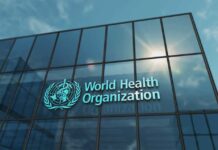
A surge in hard drug use threatens to destabilize communities across Europe, igniting calls for urgent action.
Story Overview
- German authorities warn of an alarming rise in hard drug consumption.
- Synthetic drugs and potent mixtures are driving the crisis.
- Increased domestic production and trafficking innovations exacerbate the issue.
- International cooperation is crucial to address this growing threat.
German Authorities Sound the Alarm on Drug Surge
On October 24, 2025, German authorities issued a stark warning about a significant increase in hard drug use across the nation. The warning, based on recent data and law enforcement intelligence, highlights the growing accessibility of narcotics such as cocaine, methamphetamine, and synthetic opioids. The development is attributed to increased domestic production within Europe and heightened trafficking activities, leading to a dangerous proliferation of new, highly potent drug mixtures.
This alarming trend is not isolated to Germany; it reflects a broader European issue where drug production and trafficking have seen a marked escalation since 2024. The rise of synthetic drugs and the mixing of substances contribute to this troubling scenario, demanding immediate policy intervention and enhanced cross-border cooperation.
Germany warns of dangerous 'boom' in hard drug usehttps://t.co/QcHUUONlHD
— Insider Paper (@TheInsiderPaper) October 24, 2025
Impact of the Drug Crisis in Europe
The implications of this drug surge are profound, affecting both the short-term and long-term landscapes. In the short term, there is an increased risk of overdose and poisoning, putting immense pressure on emergency services and fostering public anxiety. Over the longer term, the normalization of hard drug use could lead to a spike in addiction rates and broader social destabilization, impacting families, schools, and communities significantly.
Particularly vulnerable to these developments are youth and young adults, who face increased exposure to these dangerous substances. Urban communities are also disproportionately affected, bearing the brunt of drug-related harm. This has led to rising healthcare and law enforcement costs, as well as political pressure for stricter drug policies and enhanced border controls.
Global Implications and Necessary Actions
The growing drug crisis in Europe is not just a regional issue; it mirrors trends seen in the United States and globally, highlighting the need for a concerted international response. The DEA’s 2025 National Drug Threat Assessment underscores similar concerns in the U.S., with synthetic opioids and adulterants posing grave risks. Authorities on both sides of the Atlantic stress the importance of coordinated international action, combining efforts from law enforcement, public health, and community engagement to effectively combat this threat.
As the situation evolves, experts advocate for a balanced approach that integrates law enforcement and public health strategies. This includes expanding access to harm reduction measures, such as naloxone and drug checking services, and addressing the socio-economic factors driving drug use. The complexity of the synthetic drug market, with its ever-evolving compounds and mixtures, necessitates innovative solutions and robust international cooperation.
Sources:
DEA Releases 2025 National Drug Threat Assessment
Drugs to Watch Out for in 2025
Germany Warns of Dangerous ‘Boom’ in Hard Drug Use
UNODC World Drug Report 2025


















